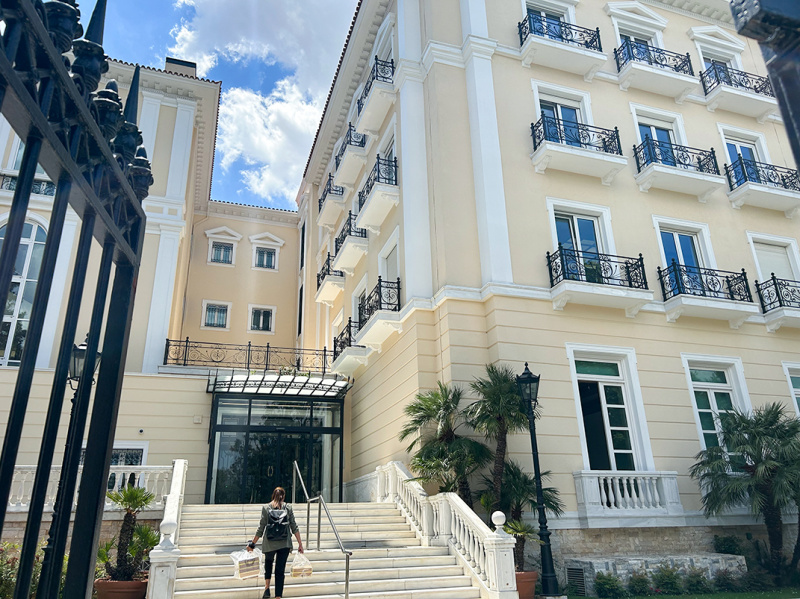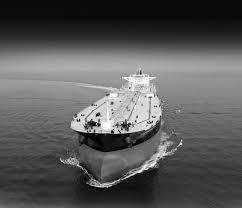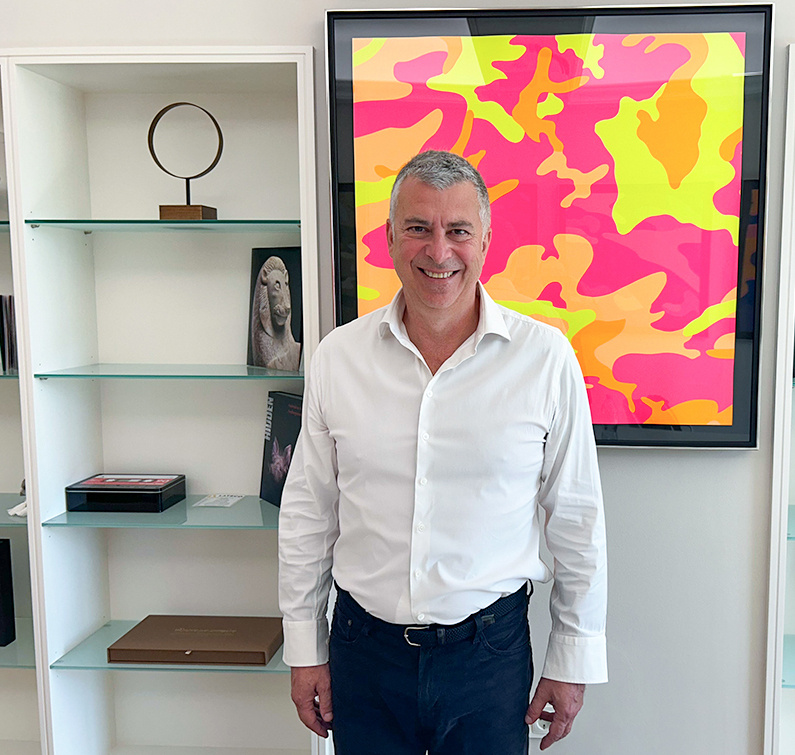〆Latsco Shipping: A Legacy of Maritime Excellence
〆Latsco Shipping is a Greek shipowner with a long tradition and history.
Latsco Shipping, a Greek shipowner and operator, boasts a maritime tradition spanning over 80 years. Currently, the company operates a fleet of 36 vessels, including product tankers, Very Large Gas Carriers (VLGCs), and Very Large Crude Carriers (VLCCs). Beyond ship owning, Latsco Shipping engages in a wide array of activities, including chartering, S&P (Sale and Purchase), insurance, ship management, crew dispatch, and the provision of maritime technologies. We spoke with George Margaronis, CEO of Latsco Shipping, about the company’s history, current state, and prospects.
(Text by Hiruofumi Yamamoto)

■Over 80 Years of Tradition
―I would like to hear about the overview of your company.
“Our headquarters is located in Monaco, with offices in Athens, London, and Dubai. We have 176 employees working across these four locations. The management operations are conducted from Monaco.”
―Latsco Shipping has a very long history in Greek shipping. Can you tell us about the history since its inception?
“The origins of our company date back to the 1940s when our founder, Captain John S. Latsis, ventured into passenger and international shipping. With over 80 years of experience in the maritime industry, we initially operated under the name ‘Petrola International S.A.’ Over the years, our group has managed a fleet of over 100 vessels, ranging from Ultra Large Crude Carriers (ULCCs) to dry cargo ships.”

―What is the current state of Latsco Shipping?
“Currently, as Latsco Shipping Limited, we operate a fleet of 36 vessels, which includes 4 Very Large Crude Carriers (VLCCs), 7 LR2 Product Carriers, 9 MR Product Carriers, 7 VLGCs, 2 LGCs, 2 LNG, 1 Ultramax and 2 Supramax Dry Bulk Carriers and 2 Containers. Additionally, we have four dual-fuel Very Large Gas Carriers (VLGCs) scheduled for delivery in 2025 and 2026, five LR2 (Large Range) ships to be delivered in 2026 and 2027, and five Ultramax Dry Bulk Vessels to be delivered between 2025 and 2027 on order.”
“When including ships under construction and managed vessels, we are involved with 50 ships in total. The LPG ships and LR2 types are ordered from Hyundai Heavy Industries, and we also manage the technical aspects of 1 VLGC owned by Trafigura.”
― What are the characteristics and strengths of Latsco Shipping?
“Our strength lies in respecting the vision of our founder, John S. Latsis, who maintained a distinguished ethical standard and passion as a pioneer in energy transportation. Specifically, as a shipping company transporting petroleum products, gas, and crude oil, we adhere to the highest standards of performance, safety, reliability, and environmental protection while operating an ever-growing fleet of energy transport vessels. Building long-term trust with our clients and fostering the sustainable growth of our fleet are the pillars of our philosophy. Simultaneously, the renewal and expansion of our fleet, combined with a balanced employment portfolio, form the foundation of our strategy.”

― Is there a possibility of expanding into dry bulk?
“Personally, I believe there is an opportunity. In fact, I have experience in dry cargo operations. I worked at Clarksons for 15 years, initially stationed in London. In 2002, I was asked by Clarksons to reopen the office in Greece, where I managed the office for 12 years before joining Latsco.”
■Trust in Japanese Companies and Shipyards
― Can you tell us about your relationships with Japanese companies and shipyards?
“Our relationship with Japan is historically significant, as our founder once had an office in Tokyo and we built our first new building ships at IHI Yokohama Shipyards in the 1960ʼs. We owned 4 Supramax vessels in partnership with Mitsubishi Corporation for many years and continue to maintain a good relationship with them. Additionally, we have a long-term charter from a Japanese shipowner.”
“Our connection with Japanese shipyards, particularly Oshima Shipbuilding, is strong. We have ordered six new ships from Oshima, the first ship delivered in April of this year, with five more scheduled for delivery between 2025 to 2027.”
Our Drycargo office in Dubai, Marla Trading has many ships on time charter, for periods ranging from one, up to five years. All of these vessels are Japanese-built ships ranging in size from 40,000 DW to 64,000 DW.

―What are your efforts toward decarbonization?
“The International Maritime Organization (IMO) and the European Union (EU) have urged decarbonization, affecting shareholder sentiment and causing some investors to shy away from the crude oil sector. However, I believe the energy transportation market will remain stable. Japanese market researchers share this view, recognizing that crude oil and petroleum products are essential for developing countries rather than mature economies. While publicly traded companies, global economic analysts, and the IMO criticize carbon-intensive industries like oil and steel, Latsco is committed to stable transportation of petroleum products, crude oil, and gas while progressing towards decarbonization.”
―What are your future business strategies?
“Our approach is always very conservative, built on trust with our customers. Our company has interests beyond shipping. Hellenic Petroleum, the largest refining group in Greece, is part of the family’s diverse business portfolio. Since 2000, we have built many tankers and gas carriers. For dry bulk and container ships, particularly dry bulk, we decided to build them at Japanese shipyards. Why Japanese shipyards? While the cost of building ships might be lower in other countries, we trust the culture, business manners, and quality of Japanese shipyards. We aim to continue strengthening our partnerships with Japanese shipyards in the future.”

〆【インタビュー エネルギー輸送の先駆者】
ラツコ・シッピングCEO ジョージ・マルガロニス氏、日本造船所を信頼
ラツコ・シッピング(Latsco Shipping)は、ギリシャの船主兼オペレーター(運航船社)だ。同社は80年以上にわたる海運の歴史と伝統を持つ。現在、プロダクトタンカー(石油製品船)、VLGC(大型LPG〈液化石油ガス〉船)、VLCC(大型原油タンカー)を含む36隻の船舶を運航する。船主としてだけでなく、ラツコ・シッピングはチャータリング(用船活動)、売買(S&P)、保険、船舶管理、クルー派遣、海運技術の提供など、多岐にわたる活動を展開する。ジョージ・マルガロニスCEO(最高経営責任者)に、同社の歴史と現状、将来の展望について聞いた。
(聞き手 山本裕史)
■80年以上の伝統
――最初にラツコ・シッピングの概要について聞きたい。
「本社はモナコにあり、アテネ、ロンドン、ドバイにオフィスがある。これら四つの拠点で176人の社員が働いている。管理業務はモナコで行っている」
――ラツコ・シッピングはギリシャ海運界で非常に長い歴史を持つ。設立からの歴史について聞きたい。
「当社の起源は1940年代にさかのぼる。創業者であるジョン・S・ラティス船長(キャプテン)が旅客船と国際海運業に進出したことが始まりだ。海運業界で80年以上の歴史を持ち、当初はペトロラ・インターナショナル(Petrola International)として運営されてきた。長年にわたり、当社はULCC(超大型原油タンカー)からドライ船まで、100隻以上の船舶を管理してきた」
――ラツコ・シッピングの現状はどうか。
「現在、VLCC4隻、LR(ラージレンジ)2型プロダクトタンカー7隻、MR(ミディアムレンジ)プロダクトタンカー9隻、VLGC7隻、LGC(大型ガス輸送船)2隻、LNG(液化天然ガス)船2隻、ウルトラマックス1隻、スープラマックス2隻、コンテナ船2隻の計36隻を運航している。2025―26年に竣工予定の二元燃料VLGC4隻、26―27年に竣工予定のLR2型船5隻、25―27年にかけて竣工予定のウルトラマックス5隻を発注済みだ」
